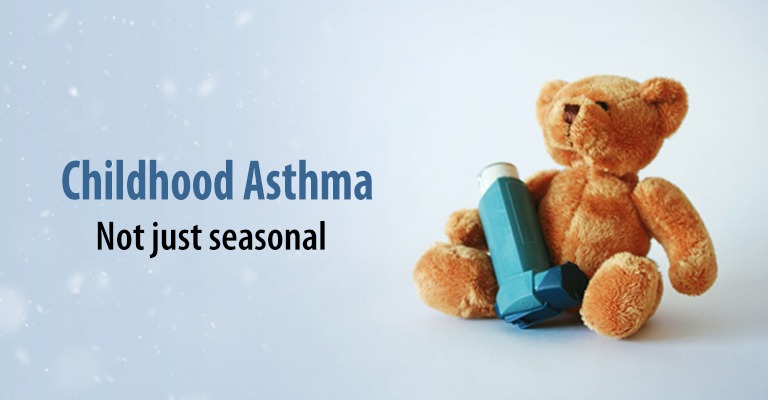
Asthma is a condition involving chronic inflammation and narrowing of the airways. Childhood asthma isn’t any different from asthma in adults, but the difficulties it brings are often challenging to manage, sometimes leading to emergencies and hospitalization.
In childhood asthma, the lungs and airways become easily inflamed when exposed to certain triggers like inhaling pollen, a common cold or some other respiratory infection. Children often suffer miserably, miss school and games and can’t sleep.
Such triggers and allergens are substances usually present in the environment around us and children with “hyperactive airways”, overreact to these irritants which wouldn’t bother healthy kids. While childhood asthma allergens are mostly found in the air we breathe, the root cause of asthma isn’t really known.
Weather conditions certainly play a big part, and for some children, the problem gets worse during certain seasons, cold and dry air being a common cause for bad flare-ups. However, seasonal variations definitely are not the sole factor responsible for childhood asthma.
What are the other causes of childhood asthma?
While the causes of childhood asthma haven’t been fully fathomed yet, some of the other factors that could be involved include:
- An inherited tendency to develop allergies
- Parents with history of asthma
- Some form of airway infection at an early age
- Exposure to day-to-day irritants like cigarette smoke or other forms of air pollution
- Viral infections like a common cold
- Allergic reaction to dust mites, pet dander, pollen or mold
- Physical activity like sports and exercise
What are the other risk factors for childhood asthma?
Children are more likely to develop asthma if exposed to some of these risk factors:
- Exposure to tobacco smoke, perhaps even before birth
- Earlier allergic reactions, food allergies or allergic rhinitis
- Residing in a highly polluted neighborhood
- Being obese
- Respiratory conditions like chronic stuffy nose, sinusitis or pneumonia
- Heartburn or gastroesophageal reflux disease
- Boys often are more prone
What are the common symptoms of childhood asthma?
Some common symptoms include:
- Tightness or pain around the chest
- Feeling short of breath
- Respiratory distress
- Wheezing or a whistling noise when breathing
- Bouts of coughing which gets worse at night
What are the basic treatment protocols for asthma in children?
The main target is to:
- Keep symptoms under check
- Prevent flare-ups
- Keep the lungs healthy
- Help the child enjoy an active life
Medication for childhood asthma
There are two types of asthma medication:
- Preventers: These medicines render the airways less sensitive to triggers by reducing swelling and mucus inside.
- Relievers: These are used to swiftly ease symptoms by relaxing the tight muscles around the airways. Such medication is usually used during an asthma attack.
What are the emergency signs to look out for?
Asthma emergency red flags are when the child:
- Has difficulty breathing or is not breathing at all
- Can’t speak comfortably and feels breathless
- Has blue lips
- Has symptoms worsening fast
- Has ‘tugging in’ of the skin between ribs or at the base of the neck
- Isn’t getting much relief from the inhaler, or the inhaler is not at hand
Remember that an asthma attack can quickly turn into an emergency in children. Prevention is always the best medicine, so keep a check on the triggers and try to avoid exposure to the same as much as possible. However, always keep in mind that not everything is in your control and things can go out of hand, so keep in touch with your child’s doctor at all times and keep the emergency number handy. Your child’s paediatrician is the best person to advice you in such situations.


